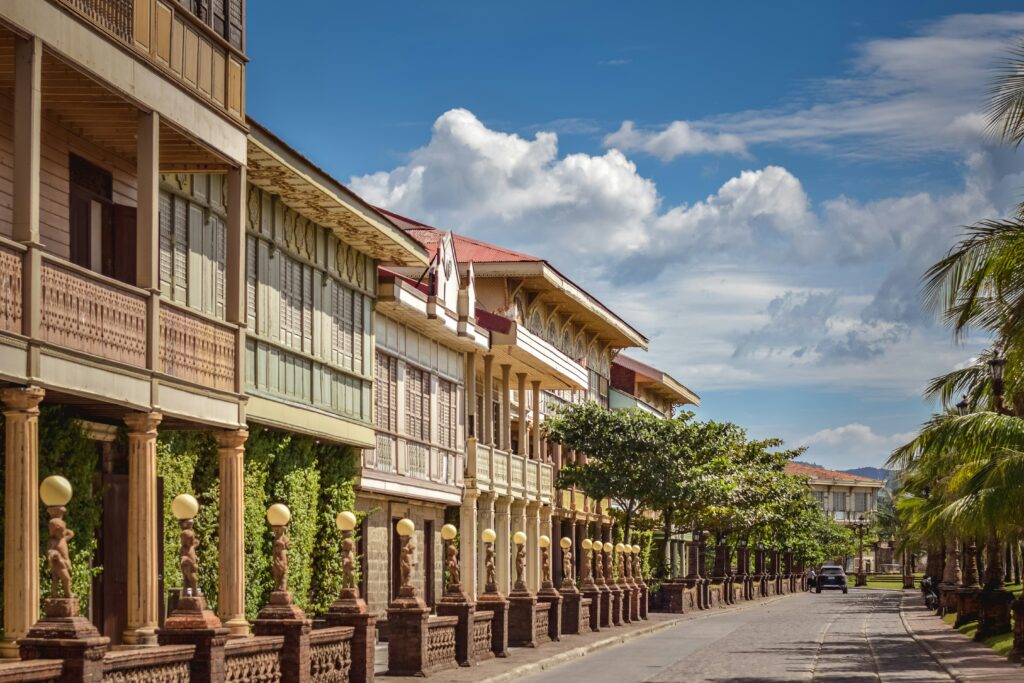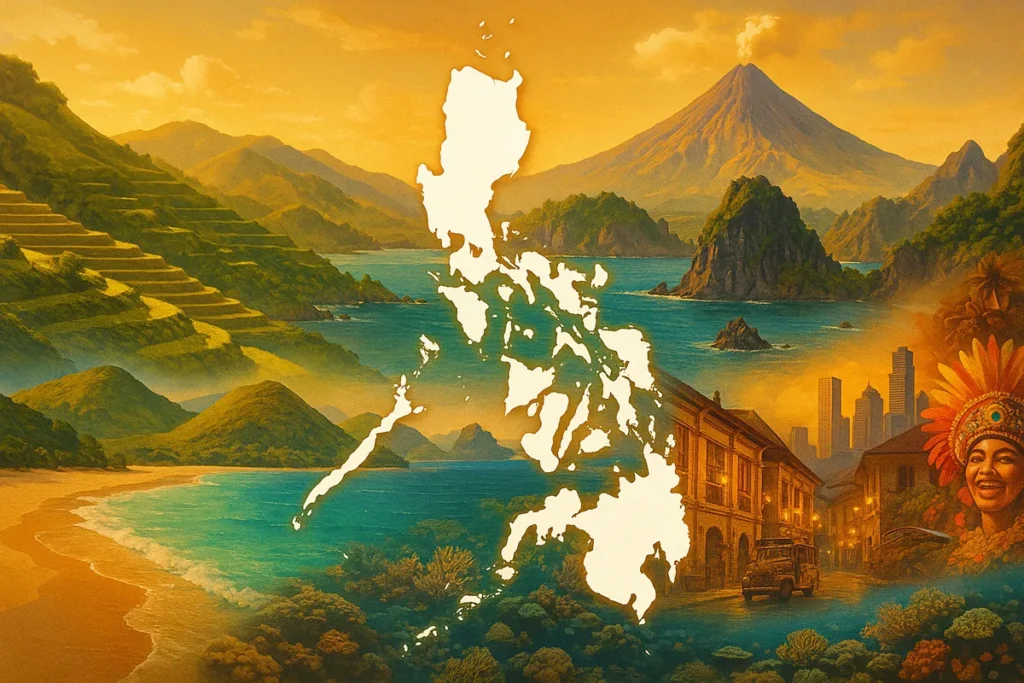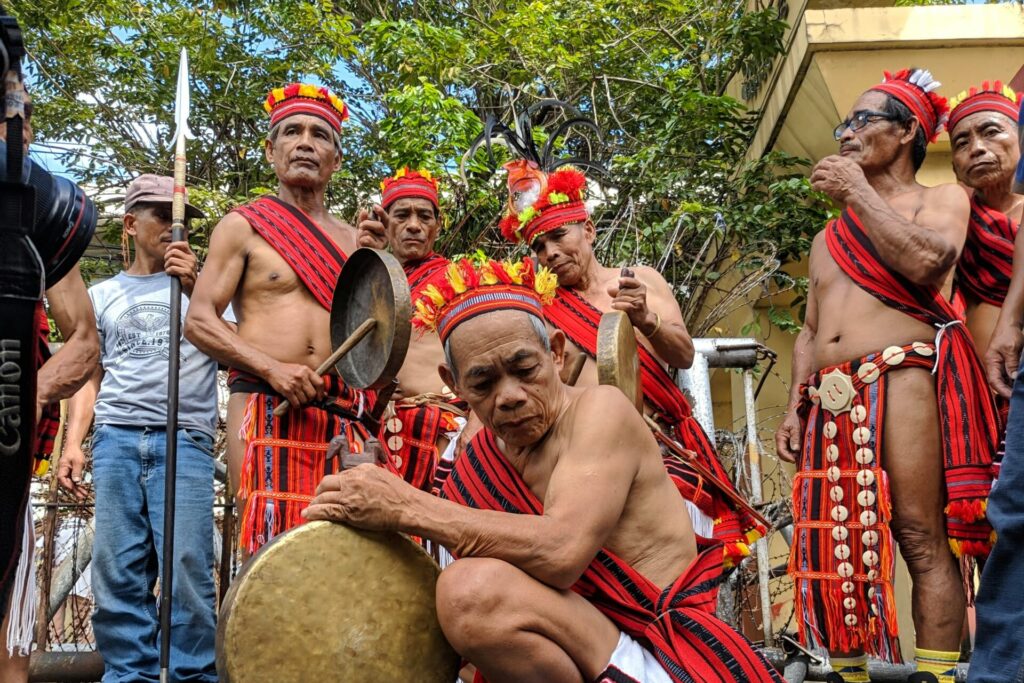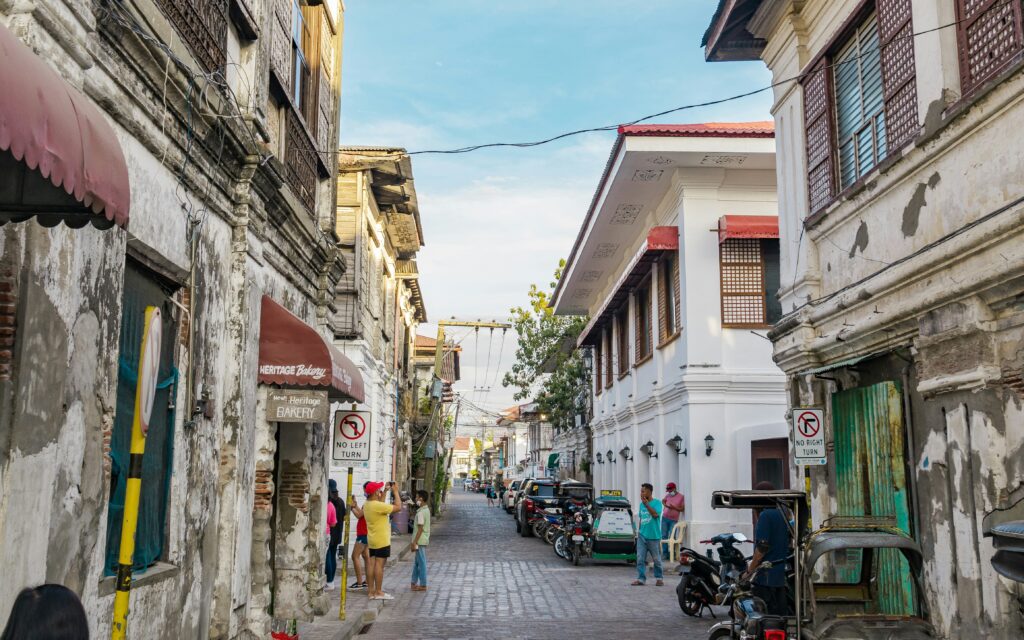The Central Luzon Region (Region III) sits at the heart of the island, connecting the country’s northern and southern provinces through wide plains and well-built highways. Known as the “Rice Granary of the Philippines,” it supplies much of the nation’s rice while also being home to cities that continue to grow and modernize. The region stretches from the rugged Zambales coastline to the peaks of the Sierra Madre, offering both nature and industry in balance.
Central Luzon is made up of 7 provinces: Aurora, Bataan, Bulacan, Nueva Ecija, Pampanga, Tarlac, and Zambales. Each province has its own rhythm, such as Aurora’s surf towns, Pampanga’s culinary fame, Bulacan’s heritage towns, and Zambales’ laid-back beaches. Travel deeper inland and you’ll find farm roads lined with carabaos, churches that date back centuries, and fields that glow gold during harvest season.
The people of Central Luzon are known for their hard work and hospitality. They’ve weathered typhoons, eruptions, and floods, yet continue to thrive through community and creativity. Whether you’re exploring Pampanga’s food stalls, climbing Mount Arayat, or lounging in Subic Bay, there’s a quiet confidence in how this region welcomes change while staying grounded in its roots.
This Central Luzon tourism guide explores its best destinations, local flavors, and cultural traditions. Whether you’re planning a weekend road trip or a long countryside escape, you’ll discover how Region III ties the country together through food, history, and the land itself.
Central Luzon Tourism Guide | 7 Provinces & Best Highlights
📍 Geography and Location
Central Luzon (Region III) lies north of Metro Manila, bordered by the Sierra Madre and Zambales mountain ranges. Known for its vast plains and coastal towns, it serves as both the country’s agricultural heartland and one of its most accessible travel corridors.
🌤️ Climate and Best Time to Visit
The region has a dry season from November to May, ideal for beach trips and road adventures. Rain usually falls between June and October. Summer months are perfect for exploring Aurora’s coasts and Pampanga’s festivals.
🗣️ Languages and People
Tagalog, Kapampangan, and Ilocano are widely spoken, alongside English. Locals are known for their warmth, humor, and strong sense of family. The mix of farmers, artisans, and entrepreneurs makes Central Luzon a region of both tradition and progress.
🚗 Accessibility
Central Luzon is one of the easiest regions to reach from Manila. Expressways like NLEX and SCTEX connect directly to Pampanga, Bulacan, and Tarlac, while Clark International Airport links the region to domestic and international destinations.
🍲 Known For
The region is home to Pampanga’s culinary heritage, Zambales’ beach towns, and Aurora’s surf scene. It’s also rich in heritage churches, farmlands, and volcano landscapes that attract both adventure and culture lovers.
🎉 Festivals and Highlights
The Giant Lantern Festival in Pampanga, the Mango Festival in Zambales, and Aurora’s Surfing Cup are just a few of the region’s top events. Each festival shows how locals celebrate life, food, and creativity.
Central Luzon Tourism Guide: The 7 Provinces
Central Luzon Tourism Guide: Province #1. Aurora
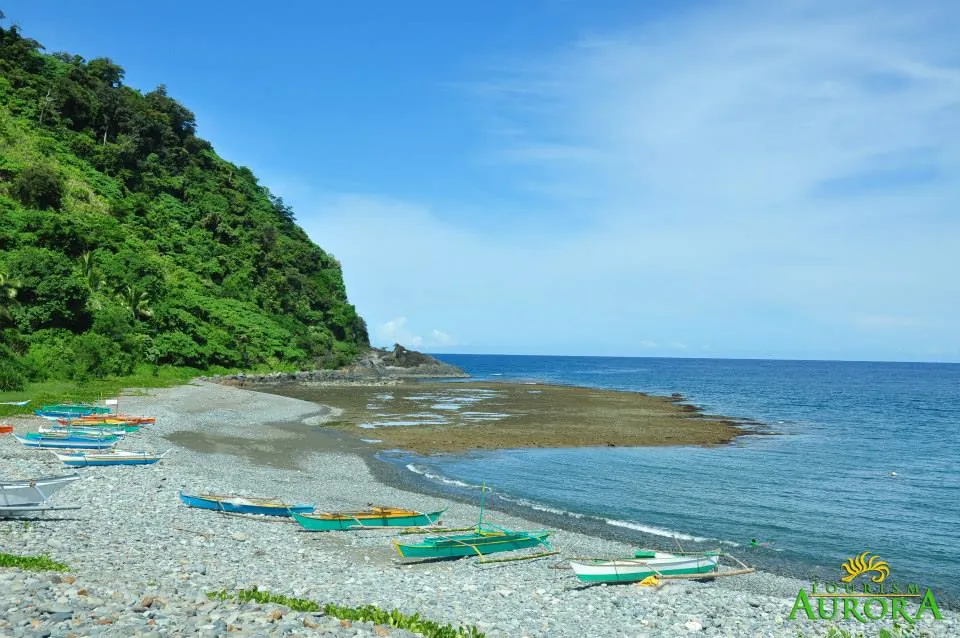
Aurora sits on the far eastern coast of Luzon, where the Sierra Madre Mountains meet the Pacific. The province is best known for Baler, a once-sleepy town that became a surfing capital after the discovery of its powerful waves. Beyond the surf, Aurora offers quiet beaches, lush forests, and waterfalls like Ditumabo, Caunayan, and Diguisit that add to its tropical appeal. The air feels fresh and unspoiled, especially in towns like Dipaculao and Casiguran where farms and fishing boats define the landscape.
What makes Aurora special is its blend of adventure and heritage. The Baler Museum tells the story of the Siege of Baler and the resilience of its people. Locals are proud of their deep connection to both mountain and sea, maintaining traditions rooted in coastal life while opening their doors to tourism. For travelers, Aurora offers a rare mix of outdoor thrill and calm simplicity, perfect for those craving nature and solitude.
Central Luzon Tourism Guide: Province #2. Bataan

Bataan’s identity is deeply tied to history. It was the final stand during World War II, and its landscapes are filled with stories of bravery and loss. The Mount Samat National Shrine stands as a powerful reminder of the province’s past, while the Death March markers trace a path of endurance through its towns. Yet today, Bataan thrives as a place of progress, balancing remembrance with reinvention. Its eco-parks, scenic hills, and protected forests make it a growing center for sustainable tourism.
Morong’s Pawikan Conservation Center invites visitors to witness sea turtle hatchlings, while Mariveles and Bagac are home to coves and resorts perfect for weekend escapes. The Freeport Area of Bataan has also opened new opportunities for trade and business without losing its laid-back coastal vibe. Locals take pride in their sense of community, often welcoming visitors with warmth and stories of survival. Bataan stands as a province that honors the past but looks boldly toward the future.
Central Luzon Tourism Guide: Province #3. Bulacan
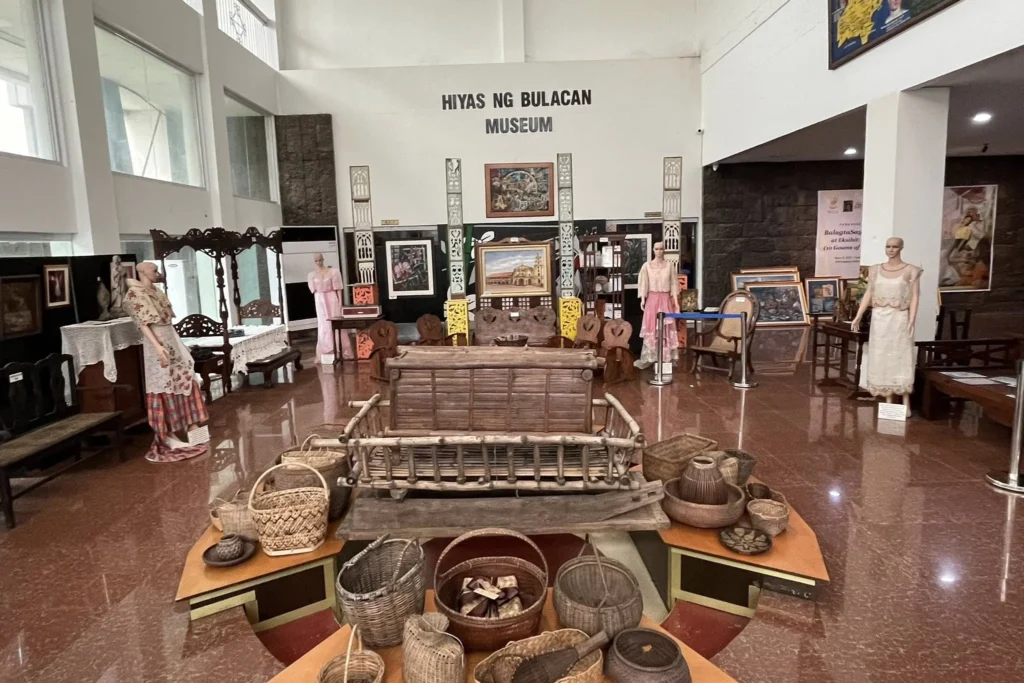
Just minutes north of Metro Manila, Bulacan is often described as the cradle of Filipino heritage. It was here that the country’s first constitution was drafted, and Barasoain Church in Malolos became the birthplace of the First Philippine Republic. The province’s towns are filled with ancestral homes, old churches, and museums that preserve centuries of history. But Bulacan isn’t stuck in time, as it continues to grow as an industrial and artistic hub, producing jewelry, fireworks, and delicacies like pastillas and chicharon.
Festivals like Singkaban and Pulilan Carabao Festival celebrate Bulacan’s creativity and rural pride. Nature lovers can visit Biak-na-Bato National Park, a mix of caves and rivers that once served as a revolutionary hideout. Whether you’re exploring its historical towns, tasting native sweets, or shopping for handicrafts, Bulacan feels like a bridge between the country’s past and present. Its people remain deeply proud of their identity as innovators and keepers of Filipino culture.
Central Luzon Tourism Guide: Province #4. Nueva Ecija
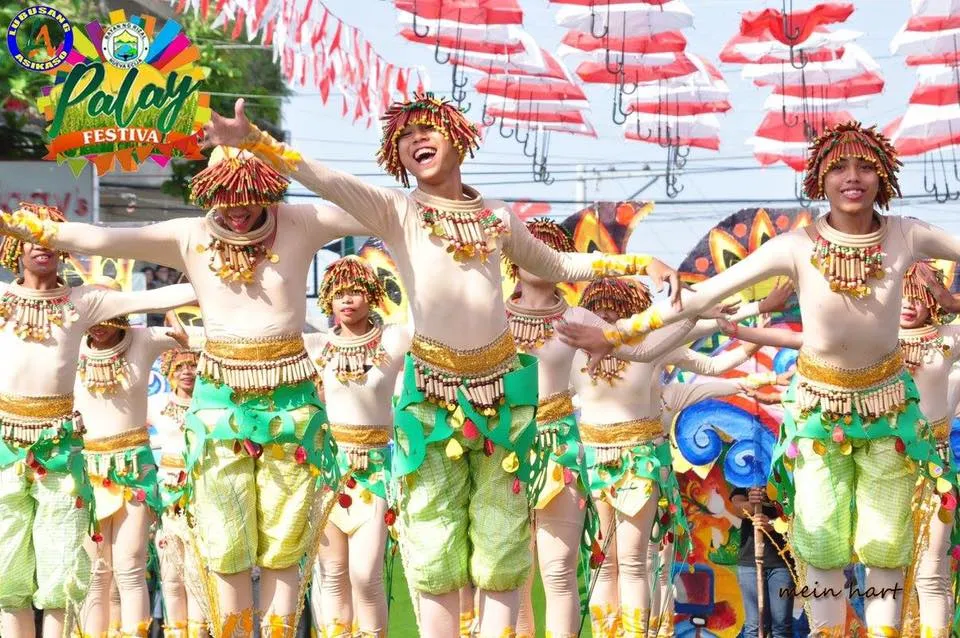
Nueva Ecija is the country’s rice heartland, a province defined by open plains, golden fields, and farmers who have mastered the rhythm of the seasons. As the largest landlocked province in Central Luzon, it produces much of the nation’s rice, earning its title as the “Rice Granary of the Philippines.” But beyond agriculture, it hides stunning natural attractions. Minalungao National Park, with its limestone cliffs and emerald river, draws travelers looking for relaxation and adventure in equal measure.
The province has embraced farm tourism, inviting visitors to learn about rice planting, fishing, and local cooking in eco-friendly resorts. Nueva Ecija’s charm lies in its simplicity. It feels peaceful yet productive, traditional yet quietly progressive. Towns like Cabanatuan and San Jose offer a good balance of rural charm and city comfort. If you’re looking to experience the countryside at its most authentic, this is where you’ll find it.
Central Luzon Tourism Guide: Province #5. Pampanga
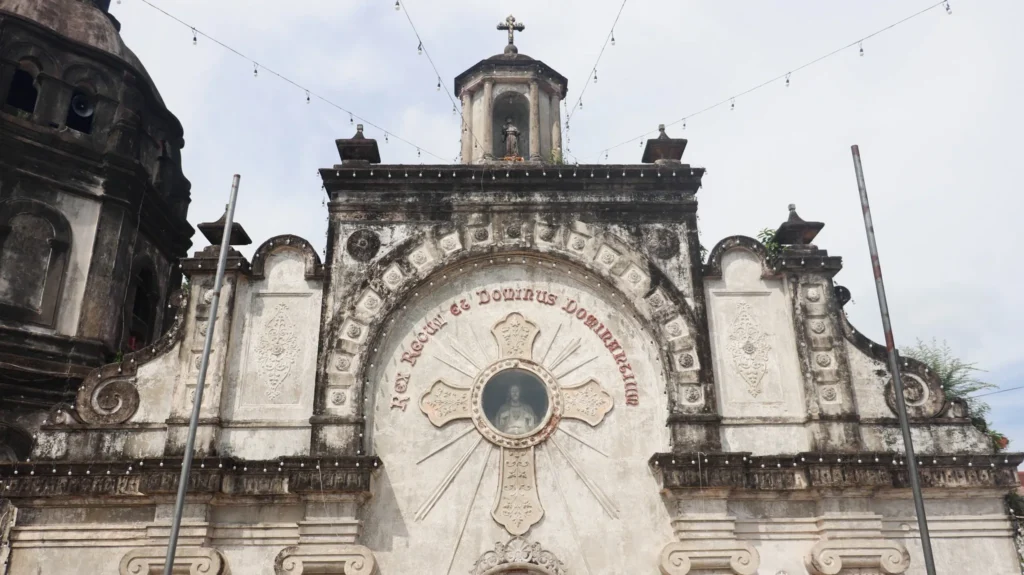
Known as the “Culinary Capital of the Philippines,” Pampanga is a feast for both the senses and the soul. Every meal tells a story, from sizzling sisig and savory bringhe to the sweet comfort of tocino and halo-halo. The province’s culinary mastery is matched only by its creativity. The Giant Lantern Festival in San Fernando lights up December nights, showing how Kapampangans combine artistry with community spirit. Clark and Angeles, once U.S. air bases, have evolved into vibrant business and entertainment hubs that still carry traces of their colonial past.
Beyond the food and festivities, Pampanga is also home to natural beauty. Mount Arayat rises like a guardian in the middle of the plains, while Candaba Swamp attracts migratory birds each year. The province exudes confidence, a mix of sophistication and local pride, making every visit feel both festive and familiar. Whether you come to eat, explore, or unwind, Pampanga welcomes you like family and feeds you like royalty.
Central Luzon Tourism Guide: Province #6. Tarlac

Tarlac sits quietly in the center of Luzon, serving as both a crossroads and a destination in its own right. Its flatlands are lined with sugarcane and rice, while its northern towns stretch toward the mountains. Capas, in particular, carries deep wartime history, marked by the Capas National Shrine dedicated to Filipino and American soldiers. But Tarlac is also a place of renewal, from its agricultural estates to eco-adventures that reveal the province’s greener side.
One of Tarlac’s crown jewels is Mount Pinatubo, whose 1991 eruption reshaped the landscape and left behind a breathtaking crater lake. Today, off-road tours and hikes attract adventurers from across the country. Anao’s ylang-ylang plantations, Bamban’s museums, and Monasterio de Tarlac’s serene hilltop cross show a quieter, spiritual side of the province. Tarlac’s people are known for their hospitality and humility, making every visit feel like a personal journey through both history and healing.
Central Luzon Tourism Guide: Province #7. Zambales
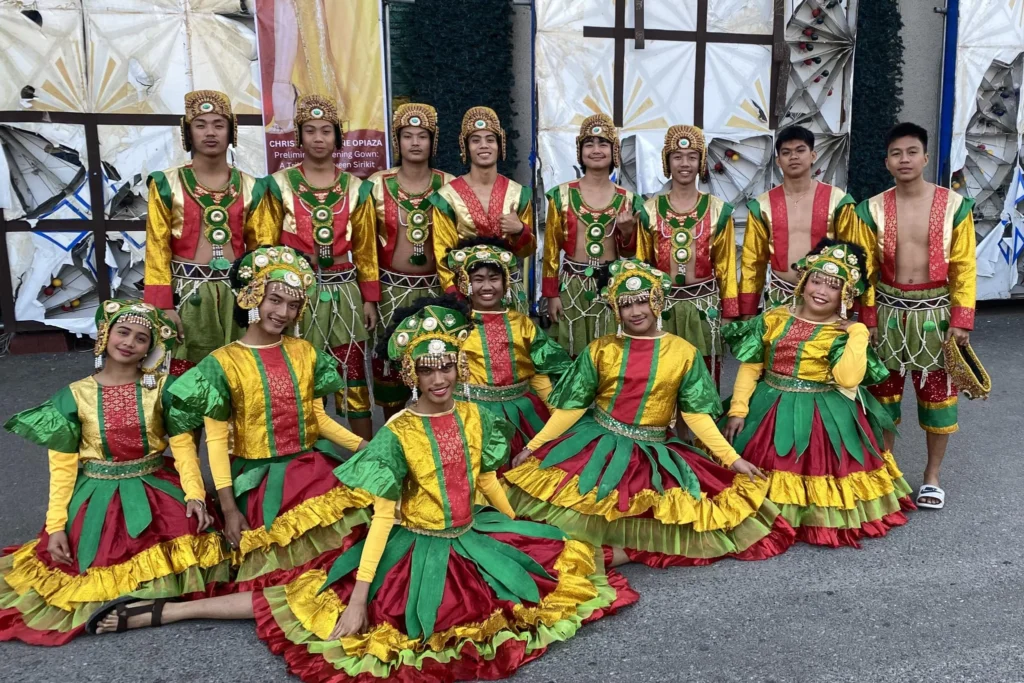
Zambales stretches along the western coast of Luzon, where the Zambales Mountains meet the South China Sea. Its shoreline is dotted with beaches and coves that have become favorites for campers and weekend travelers. Anawangin, Nagsasa, and Silanguin stand out for their volcanic ash-colored sands and pine-lined shores. Subic Bay, once a U.S. naval base, now thrives as a modern freeport offering diving, shopping, and resort experiences. Yet beyond these attractions, Zambales remains deeply local, with fishing villages and mango farms shaping its daily life.
Travelers can climb Mount Tapulao, explore waterfalls in San Felipe, or visit the crystal-clear waters of Potipot Island. The annual Mango Festival in Iba celebrates the province’s sweetest export, while quiet towns like San Antonio and Cabangan offer a slower rhythm of life. Whether you’re chasing sunsets or solitude, Zambales delivers both in abundance. It’s a coastal escape that still feels authentic, wild enough for adventure yet warm enough to call home.
Central Luzon Tourism Guide: Culture & People
Central Luzon is a region defined by its people as much as its land. The culture here stretches across plains, coasts, and mountains, creating a mix of lifestyles that somehow blend into one identity. In cities, you’ll find the energy of progress, while in rural towns, life still moves with the rhythm of planting and harvest. Festivals, food, and faith are part of daily life, and locals take pride in preserving traditions even as they welcome change. To travel through Central Luzon is to meet people who value hard work, hospitality, and joy in the simple things.
Agricultural Life and Local Rhythm
Farming shapes much of the region’s culture. Families in Nueva Ecija, Pampanga, and Tarlac depend on rice fields, sugarcane farms, and vegetable gardens that have supported generations. The planting and harvest seasons are more than work cycles; they are times of celebration, food sharing, and prayer. Even as cities grow, agriculture remains at the heart of daily life, grounding people in patience and gratitude. The countryside here teaches balance between effort and enjoyment.
Languages and Diversity
Central Luzon is a region where multiple languages coexist. Kapampangan, Tagalog, Ilocano, and Sambal are all spoken, depending on the town or province. Locals shift easily between dialects, often mixing them in casual conversations. This linguistic variety is a symbol of openness rather than division. It reflects how people have learned to live together while keeping their own voice and identity.
Festivals and Everyday Joy
Festivals are woven into life across the region. Each province celebrates something that defines its people — Pampanga has the Giant Lantern Festival, Bulacan has the Singkaban Festival, and Zambales honors its mangoes with parades and dancing. These events are bright, noisy, and full of meaning. They remind locals that hard work deserves celebration and that joy is better when shared.
Indigenous and Coastal Communities
The Aeta people of Zambales and Tarlac hold deep roots in the mountains, maintaining a lifestyle closely tied to the forest. Their hunting, farming, and healing traditions have shaped much of the region’s respect for nature. On the coasts of Aurora and Bataan, fishing villages live by the rhythm of the sea. Their days start before sunrise and end with community gatherings over fresh catch and stories. These communities preserve an older, quieter wisdom about life’s essentials.
Faith and Traditions
Faith in Central Luzon is not only practiced in churches but also lived out in homes and daily routines. Catholicism remains strong, and many of the region’s old churches have become landmarks of devotion. Families mark every milestone with prayer, food, and gathering. Fiestas fill streets with color and sound, while old customs like offering harvest thanks to the saints keep spiritual life grounded. Here, faith feels more like belonging than obligation.
Values and Resilience
Central Luzon has endured floods, typhoons, and volcanic eruptions, yet its people remain steadfast. Resilience has become second nature, built through community cooperation known as bayanihan. Families work together to rebuild, share resources, and support one another. Strength here is quiet but enduring, seen in laughter even during difficult times. Locals believe that unity, more than wealth, keeps life meaningful.
Art, Music, and Storytelling
Creativity thrives in Central Luzon, from the woodcarvers of Bulacan to the lantern makers of Pampanga. Art is everywhere — in church decorations, festival floats, and even everyday crafts sold in markets. Folk songs and dance performances keep history alive, passing down lessons and humor from one generation to the next. Young artists are finding ways to merge tradition with modern design, proving that Central Luzon’s creativity evolves but never fades.
Culinary Heritage and Family Gatherings
Food in Central Luzon is not just sustenance; it is a symbol of care and connection. Every family has recipes that have been handed down for decades, especially in Pampanga, where cooking is both an art and an act of love. Shared meals mark every event, from baptisms to simple reunions. Dishes like sisig, bringhe, and tamales show how food carries memory and meaning. Eating together is the region’s quiet way of saying, “You belong here.”
Education and Work Ethic
Education has always been valued in Central Luzon. Many families invest their hopes in schooling, believing it opens doors to a better life. Teachers are held in high respect, often seen as community mentors. Whether working in cities or tending to farms, people take pride in doing their jobs well. This respect for effort and learning explains why the region continues to grow without losing its sense of purpose.
Central Luzon Tourism Guide: Food & Cuisine
Central Luzon is often described as the kitchen of the Philippines, and for good reason. The region’s food tells the story of creativity, abundance, and community. From the kitchens of Pampanga to the farmlands of Nueva Ecija and the fishing towns of Zambales, every dish reflects pride in local ingredients and tradition. Meals are meant to be shared, and flavors range from hearty and savory to rich and comforting. If you travel through the provinces, it’s impossible not to notice that food here is more than a daily need; it’s a way of celebrating life itself.
Sisig (Pampanga)
Perhaps no dish represents Central Luzon better than Pampanga’s sisig. What began as a humble recipe using leftover pork parts has become a national favorite. Served on a sizzling plate and topped with calamansi, chili, and egg, sisig is a mix of texture and bold flavor. It’s both street food and bar chow, depending on where you find it. Locals say it reflects Kapampangan spirit — resourceful, inventive, and unafraid of flavor.
Bringhe and Tamales (Pampanga and Bulacan)
Bringhe, often called Pampanga’s version of paella, is made with glutinous rice, coconut milk, turmeric, and meat or seafood. It’s festive and comforting, traditionally served on banana leaves during celebrations. Bulacan’s tamales, on the other hand, are delicately wrapped rice cakes with savory fillings of chicken, peanuts, and eggs. Both dishes show how Central Luzon elevates simple ingredients into something worthy of a feast.
Pastillas and Native Sweets (Bulacan and Nueva Ecija)
Bulacan and Nueva Ecija are famous for their sweets, especially pastillas de leche made from carabao’s milk. These candies are soft, creamy, and often wrapped in colorful paper designs called “pabalat,” turning treats into small works of art. Local bakeries also sell inipit, espasol, and rice cakes that reflect the region’s long tradition of preserving food through sugar and milk. Sweets here are often gifts — a gesture of kindness that tastes like home.
Adobong Puting Kapampangan and Tocino
Kapampangan adobo stands out because it skips the soy sauce and uses only vinegar, garlic, and salt, resulting in a clean, bright flavor. It’s simple yet deeply satisfying, a dish that proves restraint can be just as powerful as richness. Another Pampanga staple, tocino, has become a breakfast favorite across the country. Locals marinate the meat in sugar and spices until it turns caramelized and tender. Both dishes show the region’s mastery of balance between flavor and tradition.
Seafood and Mango Dishes (Zambales and Bataan)
Zambales and Bataan sit along the western coast, where the sea provides endless ingredients for the table. Grilled fish, prawns, and crabs are common, often seasoned with calamansi and salt. Zambales mangoes, known for their sweetness, find their way into sauces, desserts, and even dried snacks sold in markets. Food here tastes clean and fresh, matching the laid-back rhythm of the coast.
Corn, Rice, and Farm Food (Nueva Ecija and Tarlac)
Central Luzon’s farms are the backbone of its cuisine. Corn, rice, and root crops appear in everything from snacks to full meals. Kakanin stalls sell puto, suman, and bibingka, especially during town fiestas and Sunday markets. Nueva Ecija’s carabao milk and rice produce a local delicacy called biko de leche that has become a hidden favorite among travelers. These dishes remind visitors that the region’s strength lies in its land and the people who work it.
Drinks and Local Delights
Tapuy, a traditional rice wine from Nueva Ecija, is often served during celebrations, while lambanog and sugarcane juice are popular in farming towns. Street vendors in Pampanga and Tarlac offer halo-halo, a mix of shaved ice, fruits, beans, and leche flan that cools down the summer heat. Even something as simple as a cup of local coffee carries the comforting flavor of the countryside. Food and drink in Central Luzon feel honest — unpretentious, generous, and full of heart.
Central Luzon Tourism Guide: Nature & Attractions
Mount Pinatubo (Tarlac, Pampanga, Zambales)
Mount Pinatubo is a symbol of both destruction and rebirth. Its eruption in 1991 changed the landscape of Central Luzon forever, but what remains today is one of the most stunning natural sights in the country. The trek to the crater lake reveals a surreal view of turquoise water surrounded by ash-gray cliffs. Travelers often ride 4×4 jeeps across lahar fields before hiking to the top. It’s a journey that feels both humbling and healing, a reminder of how nature rebuilds beauty from disaster.
View this post on Instagram
Anawangin and Nagsasa Coves (Zambales)
These coves in San Antonio, Zambales are the kind of places that make you forget time. Pine trees grow along volcanic sand beaches, and the calm waters invite visitors to camp, swim, or simply breathe in the sea air. There are no resorts or loud parties here, just the sound of waves and bonfires under the stars. Hikers can reach the coves through mountain trails, while boats offer a scenic coastal route. It’s one of the few destinations that still feels untouched, perfect for travelers seeking quiet and solitude.
View this post on Instagram
Minalungao National Park (Nueva Ecija)
Minalungao National Park is a hidden paradise carved by the Peñaranda River. Limestone cliffs rise dramatically on both sides, framing emerald-green water that glows under the sun. Visitors can go bamboo rafting, cliff diving, or just wade through the shallow river with locals. The park is easy to reach from Cabanatuan, yet it feels miles away from the noise of the city. It’s a favorite for families and photographers who want to experience nature that feels both wild and welcoming.
View this post on Instagram
Baler and Ditumabo Falls (Aurora)
Baler in Aurora is the beating heart of Central Luzon’s eastern coast. Known for its surfing waves, it’s also home to natural wonders like Ditumabo Falls, often called the Mother Falls. The short trek through rivers and forest paths ends in a breathtaking cascade surrounded by moss-covered cliffs. In town, travelers can visit the historic Baler Church and Museo de Baler to learn about its rich past. With a balance of adventure and culture, Baler offers both energy and calm in a single trip.
View this post on Instagram
Mount Arayat National Park (Pampanga)
Rising above the flatlands of Pampanga, Mount Arayat is both a natural landmark and a local legend. The mountain is believed to be the home of Aring Sinukuan, a mythical god of the sun and war. Hikers who take the forest trails are rewarded with views of the plains stretching all the way to Manila Bay. The park also has picnic spots, waterfalls, and campsites, making it ideal for weekend nature trips. For Kapampangans, Arayat is more than a mountain; it’s a quiet guardian watching over their province.
View this post on Instagram
Subic Bay Freeport Zone (Zambales)
Subic Bay has transformed from a U.S. naval base into a dynamic mix of leisure and eco-tourism. The bay’s deep blue waters now welcome divers, yacht owners, and beachgoers from all over the world. Adventure parks, ocean attractions, and forest trails offer family-friendly options, while nearby resorts cater to those who want comfort and relaxation. Despite its development, Subic has managed to preserve much of its natural charm. It’s where business, leisure, and nature meet in one well-kept coastal escape.
View this post on Instagram
Barasoain Church and Heritage Sites (Bulacan)
History lives in the walls of Barasoain Church in Malolos, Bulacan. This is where the First Philippine Republic was established in 1899, making it one of the most important historical landmarks in the country. The church’s architecture is a blend of stone and artistry, standing as a symbol of faith and independence. Beyond Barasoain, Bulacan offers other treasures like ancestral houses, the Biak-na-Bato caves, and century-old plazas. Exploring these heritage spots feels like stepping into a story that continues to inspire the nation.
View this post on Instagram
Candaba Swamp (Pampanga)
Candaba Swamp is one of the most underrated natural destinations in Central Luzon. During the migratory season, thousands of birds from Asia stop here to rest, turning the wetlands into a haven for wildlife photographers and nature lovers. Early mornings reveal mist-covered fields and reflections of the sky in still waters. Locals continue to farm and fish around the area, maintaining a balance between livelihood and conservation. Candaba shows how biodiversity thrives when people and nature coexist with respect.
View this post on Instagram
Central Luzon Tourism Guide: Getting Around
Travel Routes
🚗 North Luzon Expressway (NLEX)
NLEX is the main gateway to Central Luzon from Metro Manila. It connects the capital to Bulacan, Pampanga, and Tarlac in just a few hours. From here, you can easily branch off to other major roads like SCTEX and TPLEX. The drive is smooth, with service areas and scenic rest stops along the way. This route is ideal for road trips and travelers who prefer flexibility.
🛣️ Subic–Clark–Tarlac Expressway (SCTEX)
SCTEX links the industrial hubs of Subic and Clark to Tarlac, providing fast access across the region. It’s one of the most scenic highways in the Philippines, passing through green fields and mountain views. This route is also the key to reaching Zambales beaches and Tarlac’s adventure spots. Travelers often pair SCTEX with NLEX for a smooth, direct ride from Manila.
🚙 Tarlac–Pangasinan–La Union Expressway (TPLEX)
TPLEX extends from Tarlac and connects to northern provinces like Pangasinan and La Union. It shortens travel time significantly and makes long drives feel effortless. For travelers heading toward the Ilocos Region, this is the route to take. It also offers access to smaller towns and mountain destinations in northern Central Luzon.
🚌 Public Transport Hubs
Central Luzon’s bus network is extensive and reliable. Major terminals in Cubao, Pasay, and Caloocan serve routes to every province in the region. Victory Liner, Five Star, and Genesis buses run daily trips to cities like San Fernando, Angeles, and Cabanatuan. Vans and jeepneys handle shorter distances, while tricycles remain the go-to for local rides.
✈️ Clark International Airport
Located in Pampanga, Clark International Airport serves as the main aviation hub of Central Luzon. It connects domestic travelers and international visitors from countries across Asia. The airport’s proximity to Angeles City and Subic makes it a convenient entry point for business and leisure trips. From Clark, buses and private vans can take you anywhere in the region within hours.
🚐 Local and Scenic Routes
Outside the expressways, smaller provincial roads reveal the charm of Central Luzon. The Aurora-Baler Road offers winding mountain views, while the old MacArthur Highway passes through heritage towns and local eateries. Travelers who take these routes often discover hidden gems like roadside markets, old churches, and family-run carinderias that tell real stories of the region.
Plan long drives to start early in the morning. The highways are safest and clearest before sunrise, and it gives you time to stop for food or photos along the way.
Travel Tips
💰 Budget Wisely
Central Luzon is easy to explore without overspending. Budget travelers can stay in guesthouses for under ₱1,000 per night and enjoy meals for ₱150–₱300. Bring extra cash for local markets, entrance fees, and pasalubong since some towns have limited ATMs. Most areas accept GCash or Maya, but cash is still preferred in smaller towns.
🌤️ Best Time to Visit
The best months to explore Central Luzon are from November to April when the weather is cooler and dry. This period is perfect for outdoor trips, coastal drives, and hiking. The rainy months of June to September can bring flooding to lowlands, so always check weather updates before traveling. Early morning trips are ideal to avoid heat and traffic.
🚗 Local Transportation
Jeepneys, tricycles, and buses are the main ways to get around. If you’re exploring several provinces, renting a car gives you more freedom to stop at hidden spots. Apps like Google Maps work well here, especially along major highways. Be prepared for toll fees when using expressways and bring coins for small towns that use cash-only systems.
🎒 What to Pack
Pack light, breathable clothes for day trips and a light jacket for higher areas like Arayat and Baler. Bring sunscreen, a hat, and insect repellent if you plan to hike or swim. Power banks are handy since some rural spots have limited charging outlets. A reusable water bottle and dry bag will make your trip more convenient and eco-friendly.
🧭 Local Etiquette
People in Central Luzon are warm and polite. Use “po” and “opo” when speaking to elders, and always greet locals with a smile. Dress modestly when visiting churches and rural communities. Showing respect, even in small gestures, goes a long way toward making your trip more meaningful and memorable.
📸 Insider Tip
Stop by small-town markets and carinderias for the best food experiences. They often serve family recipes you won’t find in restaurants. Locals love to chat with visitors, especially if you show interest in their stories. Traveling slowly lets you see a more authentic side of the region that many tourists miss.
Week-Long Itinerary Overview
✨ Want a Custom Central Luzon Itinerary?
We can help you design a personalized trip across the Central Luzon provinces.
Whether you’re after adventure, culture, or food, we’ll craft the perfect route for you.
Conclusion
Central Luzon is the kind of place that feels both familiar and full of surprise. The region moves between quiet farms and buzzing cities, between beaches that stretch for miles and mountains that hold stories of resilience. Every province tells a different side of the Filipino experience, from the culinary mastery of Pampanga to the historic pride of Bulacan and the laid-back charm of Zambales and Aurora. Travelers who come here quickly see that Central Luzon is more than a stopover between the north and south. It’s a world of its own, waiting to be understood at a slower, more human pace.
If you take the time to explore, you’ll find that the best moments often happen off the main roads. Maybe it’s a carinderia owner offering you an extra serving, a farmer explaining his harvest, or the sound of waves in a quiet coastal town. The beauty of Central Luzon isn’t found in grand gestures but in everyday life lived fully.
Plan your trip, meet its people, and let its stories stay with you long after you leave. And when you’re ready to dive deeper, check out each province’s individual guide, and they’ll take you closer to the heart of this remarkable region.
Disclaimer: Some media content featured on this page has been embedded directly from third-party platforms such as Facebook, Instagram, or YouTube using their official embed codes. We do not claim ownership of this content. All rights remain with the original creators. If you are the owner of any embedded material and wish to request its removal, please contact us and we will address it promptly.

